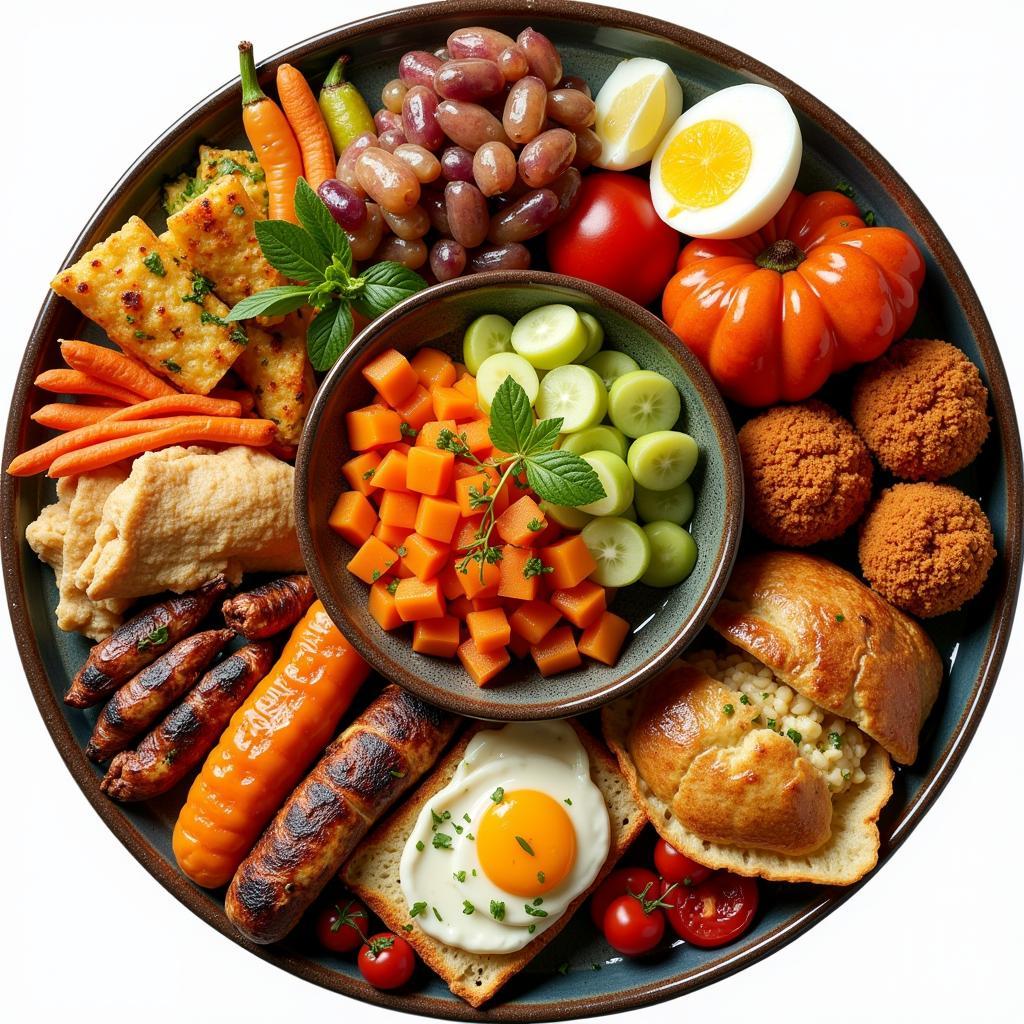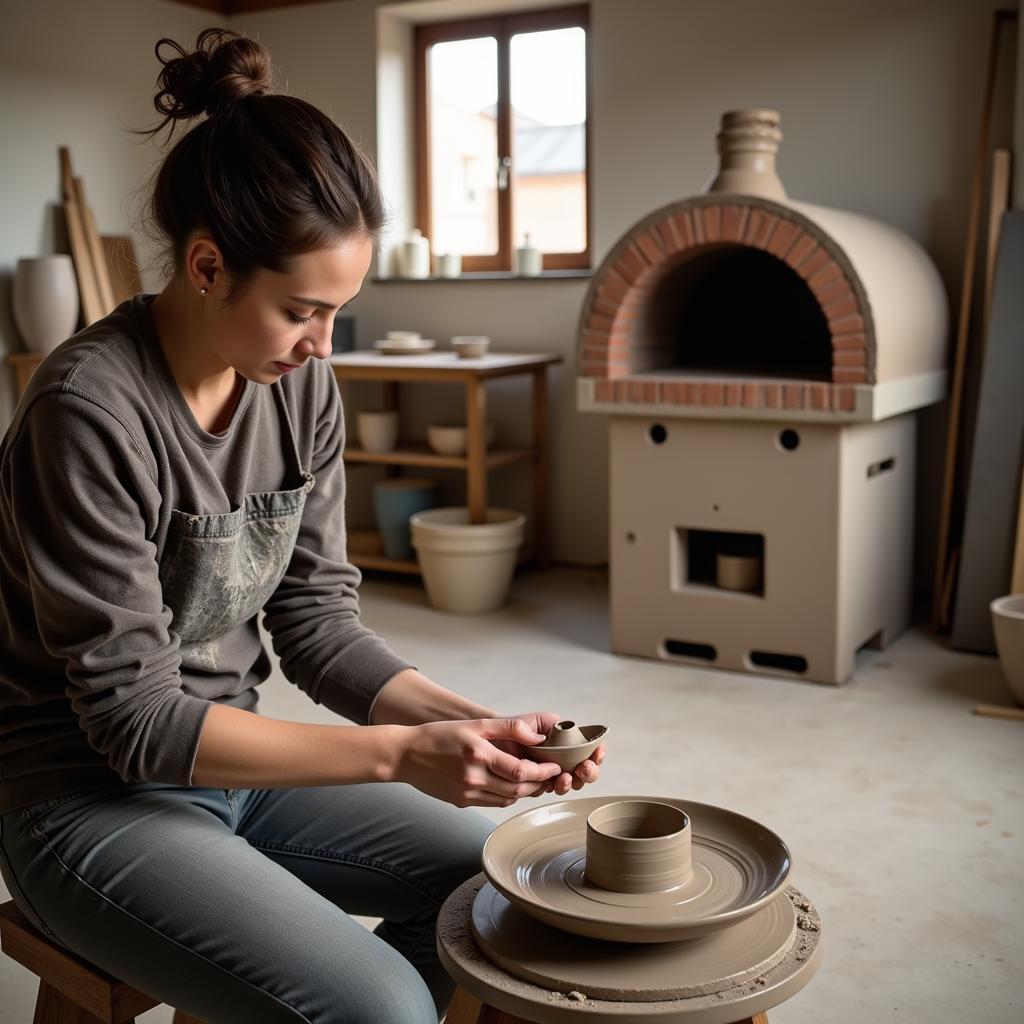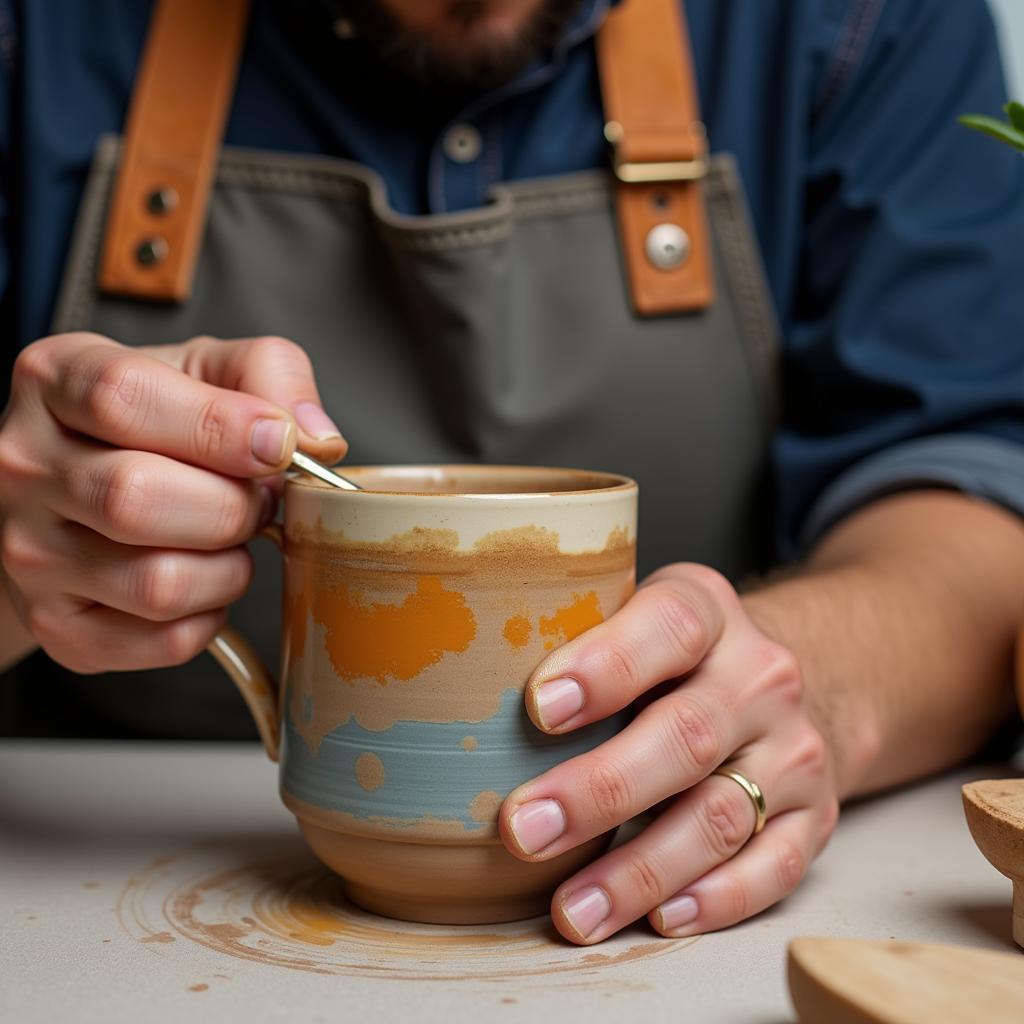When you’re investing in beautiful, handcrafted ceramics, the last thing you want to worry about is whether the glaze is safe for food. It’s a valid concern, as not all clay glazes are created equal. “Food Safe Clay Glaze” refers specifically to glazes that are free from harmful chemicals and toxins that could leach into your food. Let’s delve into everything you need to know about food safe clay glaze so you can dine with peace of mind.
Understanding the Importance of Food Safe Clay Glaze
The main concern with non-food safe glazes lies in the potential for lead and cadmium to seep into food, especially acidic substances like tomato sauce or citrus fruits. These heavy metals pose serious health risks, particularly for children.
 Ceramic Plate with Colorful Food
Ceramic Plate with Colorful Food
How to Identify Food Safe Clay Glaze
Determining if a glaze is food safe isn’t always straightforward. Here’s what to look for:
- Labeling: Reputable ceramic artists and manufacturers often label their pieces as “food safe,” “dinnerware safe,” or “lead-free.”
- Source: Purchasing from established artists or retailers specializing in food-safe ceramics increases your chances of finding safe pieces.
- Testing: Home testing kits are available to detect lead and cadmium in ceramics.
Factors Influencing Glaze Safety
Several factors determine whether a clay glaze is food safe:
- Materials: The type of clay, pigments, and fluxes used in the glaze formulation play a crucial role. Some pigments, particularly those containing heavy metals, can be problematic.
- Firing Temperature: Proper firing temperatures are essential to ensure the glaze fully vitrifies, creating a stable and impermeable surface.
- Glaze Application: Even a food-safe glaze can become unsafe if applied incorrectly, such as applying too thick a layer or not allowing for proper ventilation during firing.
 Pottery Studio with a Kiln in the Background
Pottery Studio with a Kiln in the Background
Tips for Using and Caring for Your Food Safe Ceramics
- Handwashing: While many food-safe ceramics are dishwasher and microwave-safe, handwashing is generally recommended to prolong their lifespan and prevent potential damage to the glaze over time.
- Avoiding Extreme Temperature Changes: Avoid exposing your ceramics to rapid and extreme temperature fluctuations, as this can cause cracking or crazing in the glaze.
- Inspecting for Damage: Regularly examine your ceramics for any chips, cracks, or signs of wear in the glaze, as these can compromise its safety.
Expert Insights on Food Safe Glazes
“As a ceramic artist who prioritizes food safety, I exclusively use lead-free glazes and thoroughly test my pieces to ensure they meet the highest standards,” says renowned ceramicist, Sarah Miller. “The health and well-being of those who use my creations are paramount.”
 Ceramic Artist Applying Glaze to Pottery
Ceramic Artist Applying Glaze to Pottery
Conclusion
Choosing food-safe clay glaze is a must for any discerning diner. By understanding the factors that contribute to glaze safety and following these simple tips, you can confidently enjoy your culinary creations on beautiful, handcrafted ceramics without compromising your health.